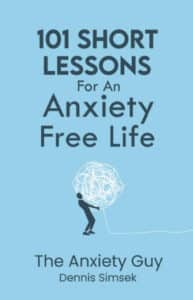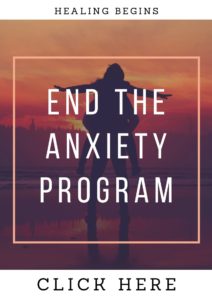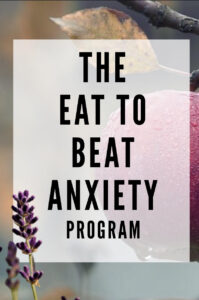Anxiety is a very common mental disorder that affects many people. The definition of anxiety will make it clearer for you the sufferer, to understand this disorder better. The dictionary definition of Anxiety goes on to give the definition of anxiety as follows:
“An abnormal and overwhelming sense of apprehension and fear often marked by physiological signs (such as sweating, tension, and increased pulse). A confusion concerning the reality and nature of the threat, and by self-doubt about one’s capacity to cope with it “
“Through the definition of anxiety it can be seen that it is an unpleasant inner state of mind giving rise to different types of nervous behaviour. Such as pacing here and there, accompanied with many types of somatic complaints.”
When you want to define anxiety you have to understand that it is a combination of a feared state of mind, combined with particular types of physical activities that clearly show an unpleasantness in the mind and behaviour. Anxiety is a feeling of dread that springs out of anticipated events that may or may not happen. It’s slightly different from the kind of fear most people have come to know, because anxiety is not a response to a real or an imminent threat that is going to happen in the near future.
The definition of anxiety can be summarised as a strong feeling of inner turmoil, uneasiness or worry due to an unfocused state of mind. This state of mind arises due to an overreaction to a situation that may or may not happen. The anxious state of mind has a very real connection to the physical body giving way to many physical effects like muscular tension, fatigue, inability to concentrate, restlessness, dizziness etc.
When you experience too much anxiety for a long a period of time, you have what is commonly known as an anxiety disorder. This must be treated immediately to regain control over your mind and life. By understanding the definition of anxiety clearly, you then begin to understand the ways in which the anxiety disorder may manifest in your life. Some of the most common types of anxiety disorders are as follows…
Anxiety disorders can be classified into several more specific types. The most common ones are briefly described below.
-
Generalized Anxiety Disorder (GAD) – is a chronic disorder causing excessive, long-lasting anxiety and strong worry about non-specific objects, life events, and situations. The fear of failure and disaster extends to the point of interfering with daily functions.
-
Panic Disorder – Panic Disorder is a form of anxiety leading to sudden attacks of intense terror and apprehension exhibiting shaking, dizziness, confusion, difficulty in breathing and nausea.
-
Phobia – A Phobia also comes within the definition of anxiety, and is generally an irrational fear and avoidance of a situation or an object
-
Social Anxiety Disorder – forms part of the definition of anxiety and is known to spring out of a social phobia of being negatively judged by others leading to public embarrassment, and is accompanied by impulsive actions.
-
Obsessive-Compulsive Disorder (OCD) – this is a form of anxiety that afflicts a person with the thought patterns or actions that are highly repetitive, intrusive and distressing.
-
Post-Traumatic Stress Disorder (PTSD) – this is also included in the definition of anxiety as it is also a form of anxiety that manifests as a result of previous trauma. This is due to a highly unpleasant or painful past event such as rape, serious accident, hostage situations, military combat etc.
-
Separation Anxiety Disorder – is a form of anxiety that springs out of being attached and separated from a person, or a place leading to a strong sense of insecurity.
After knowing the definition of anxiety and the types of anxiety disorders, now is the time to know the causes of anxiety. The disorders connected with anxiety are caused by many factors including:
- Environmental Factors
- Genetics
- Medical Factors
- Substance Abuse
- Brain Chemistry (debatable)
- A combination of above
The symptoms of anxiety:
As per the definition of anxiety, the strong mental state combined with one or more of the physical activities are the tell-tale signs of anxiety. So, a person who is suffering from an anxiety disorder has one or more of the following symptoms:
- Trembling
- Nausea
- Churning stomach
- Diarrhea
- Backache
- Headache
- Numbness or “pins and needles” in arms, hands or legs
- Heart palpitations
- Sweating/flushing
- Easily tired
- Restlessness
- Trouble concentrating
- Muscle tension
- Irritability
- Frequent urination
- Being easily startled
- Trouble falling or staying asleep
- And More
By knowing the exact definition of anxiety and the types of anxiety disorders, you will be able to find out if you or a person around you is affected by this mental disorder. With the symptoms he or she exhibits, you can learn to understand the true nature of his or her mental condition.
You can then make arrangements to overcome this condition naturally to help him them regain control over themselves, and their lives. Fortunately there are many natural treatments for successfully treating a person suffering from anxiety, and the leading solution comes in the form of Cognitive Behavioral Therapy, and systematic exposure.
Join the conversation and share your experiences with anxiety in the comment section below.



















